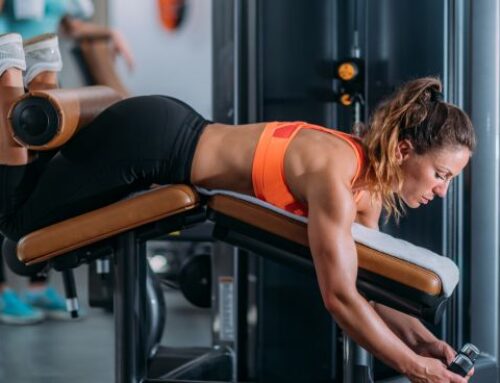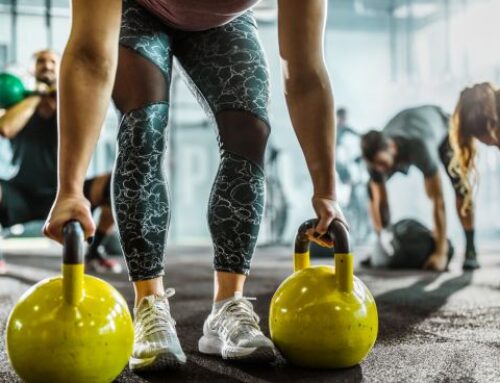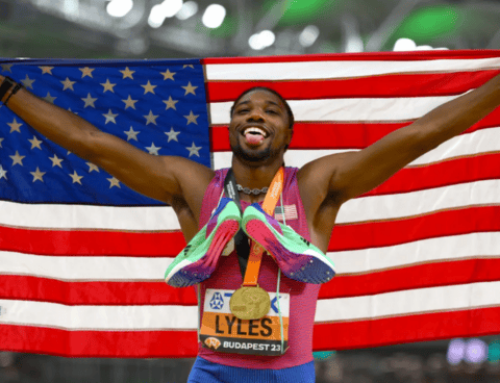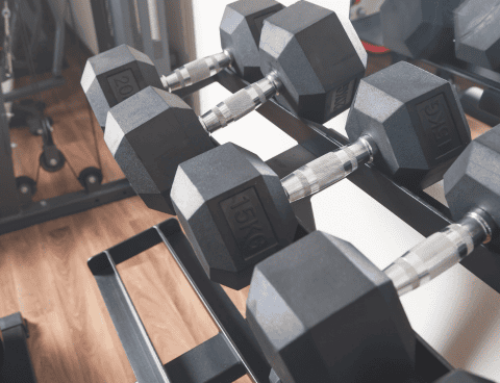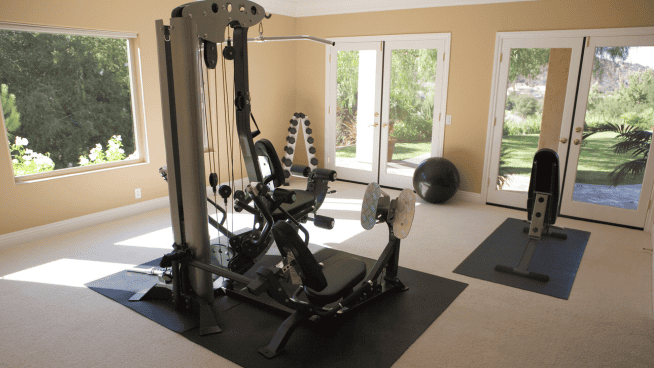Mike Boyle’s 5 Tips for More Effective Workouts
![]()
Think back to your last workout. There’s a good chance a lot of your time was spent doing absolutely nothing. Yes, resting between exercises is important, but you can use that valuable time to get more work done without extending your time in the weight room.
Elite strength coach Mike Boyle, co-founder of Mike Boyle Strength and Conditioning (Woburn, Massachusetts), recommends the following five strategies to make your workouts more efficient and effective. Check out the video player above for a demonstration of each strategy.
1. Supersets
After an exercise set, you need to recover before starting your next set. Supersets take advantage of this rest period by adding an exercise that works non-competing muscles. You’re able to do more work and strengthen more muscles without causing fatigue. Boyle says, “I can double the amount of work I can get per unit of time. I can get a much more efficient workout and not be worried about tiring out. This is one of the most fundamental things you need to do in your workouts. You can’t be sitting in the gym for two to three minutes between sets.”
RELATED: The 5 Best Supersets for Athletes
2. Combos
Performing an exercise and immediately doing a complementary one works more muscle groups in the same amount of time as one exercise and increases the metabolic challenge.
Boyle provides instruction for the Dumbbell Clean and Front Squat combo, but you can create many more exercise combos on your own. You just need to ensure that the moves flow well together, and ideally train different muscle groups so you don’t get too fatigued.
Boyle emphasizes the need for sound technique on each exercise and using weight that’s appropriate for the move you’re weakest on. “There’s no point in combining the exercises together for a metabolic effect if you can’t do each move in the first place,” he says.
3. Complexes
Complexes also involve multiple exercises, but the execution is different. You perform a set number of reps for each exercise before moving on to the next.
Boyle typically has his athletes perform five reps each of five exercises, chosen to build full-body strength and closely resembling a complete workout—albeit abbreviated. He says athletes can do this type of complex twice per week during their season to maintain strength and power.
Here’s Boyle’s full-body complex. He provides instruction in the video above.
- Dumbbell Snatch x 5
- Dumbbell Row x 5
- Dumbbell Front Squat x 5
- Dumbbell Straight-Leg Deadlift x 5
- Push-Ups x 5
4. Contrast Training
Contrast training—or PAP Complexes—pairs a heavy strength exercise, like a Squat, with a power exercise, like a Box Jump. Your body can produce more force in a movement when a heavy strength exercise precedes it, increasing the effectiveness of the power exercise. If you’re short on time, this allows you to combine heavy strength and power work. Plus, it might even be more effective.
Boyle recommends incorporating contrast training into both your upper- and lower-body workouts.
5. Stretching Between Sets
Stretching between sets is frowned upon in some weightlifting circles because it’s thought to reduce strength and power. This is true, but the effect isn’t great enough to be a concern for athletes.
For advanced athletes who need to recover after a tough set, Boyle recommends stretching to make the rest time productive. A stretch can be done after a single exercise, or even incorporated into a superset as a third move to provide more time for recovery.
RECOMMENDED FOR YOU
MOST POPULAR
Mike Boyle’s 5 Tips for More Effective Workouts
![]()
Think back to your last workout. There’s a good chance a lot of your time was spent doing absolutely nothing. Yes, resting between exercises is important, but you can use that valuable time to get more work done without extending your time in the weight room.
Elite strength coach Mike Boyle, co-founder of Mike Boyle Strength and Conditioning (Woburn, Massachusetts), recommends the following five strategies to make your workouts more efficient and effective. Check out the video player above for a demonstration of each strategy.
1. Supersets
After an exercise set, you need to recover before starting your next set. Supersets take advantage of this rest period by adding an exercise that works non-competing muscles. You’re able to do more work and strengthen more muscles without causing fatigue. Boyle says, “I can double the amount of work I can get per unit of time. I can get a much more efficient workout and not be worried about tiring out. This is one of the most fundamental things you need to do in your workouts. You can’t be sitting in the gym for two to three minutes between sets.”
RELATED: The 5 Best Supersets for Athletes
2. Combos
Performing an exercise and immediately doing a complementary one works more muscle groups in the same amount of time as one exercise and increases the metabolic challenge.
Boyle provides instruction for the Dumbbell Clean and Front Squat combo, but you can create many more exercise combos on your own. You just need to ensure that the moves flow well together, and ideally train different muscle groups so you don’t get too fatigued.
Boyle emphasizes the need for sound technique on each exercise and using weight that’s appropriate for the move you’re weakest on. “There’s no point in combining the exercises together for a metabolic effect if you can’t do each move in the first place,” he says.
3. Complexes
Complexes also involve multiple exercises, but the execution is different. You perform a set number of reps for each exercise before moving on to the next.
Boyle typically has his athletes perform five reps each of five exercises, chosen to build full-body strength and closely resembling a complete workout—albeit abbreviated. He says athletes can do this type of complex twice per week during their season to maintain strength and power.
Here’s Boyle’s full-body complex. He provides instruction in the video above.
- Dumbbell Snatch x 5
- Dumbbell Row x 5
- Dumbbell Front Squat x 5
- Dumbbell Straight-Leg Deadlift x 5
- Push-Ups x 5
4. Contrast Training
Contrast training—or PAP Complexes—pairs a heavy strength exercise, like a Squat, with a power exercise, like a Box Jump. Your body can produce more force in a movement when a heavy strength exercise precedes it, increasing the effectiveness of the power exercise. If you’re short on time, this allows you to combine heavy strength and power work. Plus, it might even be more effective.
Boyle recommends incorporating contrast training into both your upper- and lower-body workouts.
5. Stretching Between Sets
Stretching between sets is frowned upon in some weightlifting circles because it’s thought to reduce strength and power. This is true, but the effect isn’t great enough to be a concern for athletes.
For advanced athletes who need to recover after a tough set, Boyle recommends stretching to make the rest time productive. A stretch can be done after a single exercise, or even incorporated into a superset as a third move to provide more time for recovery.

